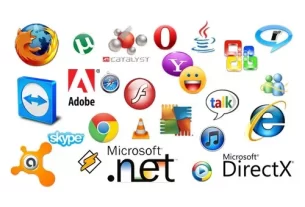
The over-the-top TV: Vital Savings For Cable And Satellite Providers
Over The Top Television Service (OTC) or On-The-Air Television Service (OTAS) is a broad category used to describe any type of media broadcasting that is carried live or in real time over one or more television networks. A “client” is any entity that has an agreement with a media organization to air live broadcasts over its television network. The term “over the top” is used to describe a broadcast format that offers content that is usually very high quality and may include highly choreographed special effects, which can also be delivered in real time. OTT providers usually have exclusive arrangements with networks like Netflix and Hulu, which have been rapidly growing in popularity as more people prefer to watch streaming media on their television sets rather than watching traditional channels. HBO, the most popular HBO programming in history, is an example of an OTT network.
The major advantages of subscribing to an OTT service include cost savings. Cable, satellite and telco customers typically pay a monthly subscription fee for the entire amount of programming they receive each month. Most of this programming is exclusive to the company and unable to be duplicated by other companies. As well as having to pay a large fee each month, viewers are subject to pay a surcharge whenever they use an additional OTT service. These fees are in addition to the normal subscription fees for cable, satellite and telco customers. Many OTT services include free equipment to receive television signals, although this equipment does not carry the same picture and sound quality as a television set.
Other advantages include a streamlined customer experience. Customers can easily sign up for a membership with an OTT company, pay a one-time or recurring fee, then start watching live television channels on any OTT receiver. There is no need to download or install any hardware. Even when customers have internet access, they can still use OTT devices to receive television signals, such as mobile phones, portable devices, computers and web browsers. This eliminates the hassle of waiting for a technician to arrive at their home or office, and it eliminates the cost of long distance and international traveling associated with traditional television broadcasts. OTT also offers a wide variety of programming options that cannot be found anywhere else.
In order to take advantage of the incredible opportunities provided by OTT devices, television network owners and producers must first establish an accredited OTT service. Several different companies provide OTT services in the US, but only a few are recognized internationally. Service providers must adhere to a rigorous set of rules in order to receive accreditation from The Association of Independent Television Distributors (TAD), which requires that programs be created and presented in an accurate, useful, engaging and consistent manner. TAD provides OTT members the recognition they need in order to provide quality content and marketing services to its members.
When using an OTT device, subscribers can immediately begin enjoying thousands of high definition channels, pay per view movies, music videos, short and long distance radio shows, special video broadcasts and much more. Many people who have been unable to view their preferred television programs due to location or time constraints now have the ability to catch up whenever they want, anywhere they want. OTT services are becoming increasingly attractive to viewers who wish to supplement their traditional pay-per-view television subscriptions. Viewers can easily tune into their favorite programs and stations whenever they have free time and can easily avoid the cost and potential complications of traditional pay-per-view television. Instead of purchasing a costly movie ticket on their television set or paying for an expensive sports subscription, OTT subscribers can now enjoy movies and events they love at an affordable cost.
While the benefits of OTT viewing are undeniable, some US television viewers remain unsure whether they should opt for an OTT service instead of sticking to their basic cable or satellite subscriptions. To make the decision easier, many television viewers are starting to explore ways to subscribe to online video content via web sites like Hulu, NetFlix and Yahoo Video. These subscription-based websites enable US viewers to watch popular movies and events from around the world via streaming video content on demand.








